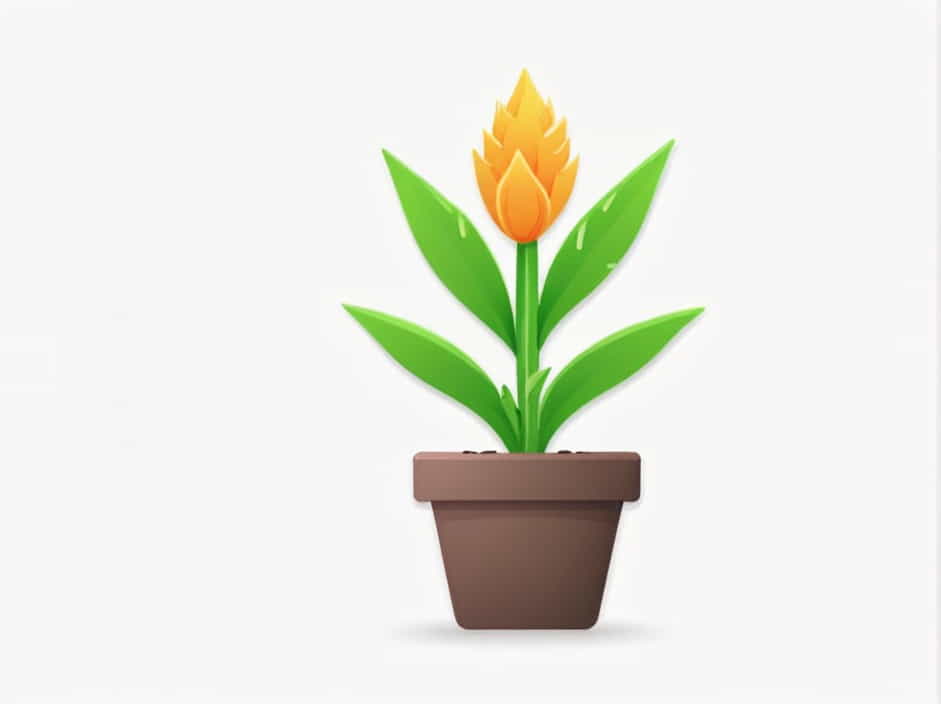Aspidistra, commonly known as the cast iron plant, is a hardy and resilient houseplant that has been popular for generations. Its ability to thrive in low-light conditions, tolerate neglect, and withstand a wide range of temperatures has earned it this unique nickname.
But why exactly is the Aspidistra called the cast iron plant? In this topic, we will explore the origins of this name, its characteristics, and why it is one of the most durable plants you can grow.
What Is the Aspidistra Plant?
Botanical Classification
- Scientific Name: Aspidistra elatior
- Family: Asparagaceae
- Origin: Native to China and Japan
- Common Names: Cast iron plant, bar room plant
The Aspidistra is a perennial, evergreen plant that grows well both indoors and outdoors. It has long, dark green leaves that rise directly from the soil, creating a lush, elegant appearance.
Why Is It Called the Cast Iron Plant?
The name “cast iron plant” comes from its exceptional hardiness and resilience. This plant can survive extreme conditions that would kill most other houseplants. Here are some key reasons behind its nickname:
1. Tolerates Low Light
The Aspidistra can grow in deep shade and low-light environments, making it ideal for indoor spaces with little natural sunlight. Unlike many plants that require bright conditions, the cast iron plant remains green and healthy even in dimly lit rooms.
2. Withstands Neglect
Aspidistra requires minimal care. It can go weeks without water and still survive, making it perfect for those who forget to water their plants. Even with irregular watering and little attention, the plant continues to thrive.
3. Resistant to Temperature Fluctuations
Unlike many tropical plants that need warm and humid conditions, the cast iron plant can handle a wide range of temperatures. Whether exposed to heat, cold, or dry air, it remains strong and resilient.
4. Drought-Tolerant
Aspidistra can survive long periods without water. It stores moisture in its roots and thick leaves, allowing it to withstand drought-like conditions without wilting.
5. Pest and Disease Resistant
The cast iron plant is naturally resistant to pests and diseases. While some houseplants attract common pests like spider mites and aphids, Aspidistra is rarely affected, adding to its reputation as an almost indestructible plant.
History and Popularity
1. Victorian Era Favorite
During the Victorian era, Aspidistra became extremely popular in England. It was commonly found in homes, offices, and bars because of its ability to survive in low light, smoky air, and poor conditions.
2. Used in Literature and Art
The plant has been mentioned in literature, including George Orwell’s novel Keep the Aspidistra Flying, where it symbolizes resilience and endurance. It has also been a subject in various paintings and artworks.
3. Modern-Day Houseplant
Today, Aspidistra remains a favorite among gardeners and plant enthusiasts. It is widely used for indoor decoration, office spaces, and shaded gardens due to its low-maintenance nature.
How to Care for the Cast Iron Plant
1. Light Requirements
- Thrives in low to medium light
- Avoid direct sunlight, as it can scorch the leaves
2. Watering Needs
- Water moderately, allowing the soil to dry slightly between waterings
- Avoid overwatering, as it can cause root rot
3. Soil and Potting
- Prefers well-draining soil
- Can be grown in pots, containers, or directly in the ground
4. Temperature and Humidity
- Ideal temperature: 50°F – 85°F (10°C – 29°C)
- Tolerates dry air, making it perfect for homes with heating or air conditioning
5. Fertilizing
- Requires minimal fertilization
- Use a balanced liquid fertilizer once a month during the growing season
Common Problems and Solutions
Even though Aspidistra is highly resilient, it can still face occasional issues:
| Problem | Cause | Solution |
|---|---|---|
| Yellowing Leaves | Overwatering | Reduce watering and improve drainage |
| Brown Leaf Tips | Dry air or too much sun | Move to a shaded area and mist leaves occasionally |
| Slow Growth | Lack of nutrients | Apply a mild fertilizer during spring and summer |
Why You Should Grow a Cast Iron Plant
If you are looking for a hardy, low-maintenance plant that thrives in almost any environment, the Aspidistra is a perfect choice. It is ideal for:
- Beginners who want a plant that is easy to care for
- Busy individuals who may forget to water their plants
- Low-light areas such as offices, hallways, and shaded gardens
- Pet owners, as the cast iron plant is non-toxic to cats and dogs
The Aspidistra elatior is called the cast iron plant because of its tough, resilient nature. It can survive in low light, drought, temperature changes, and neglect, making it one of the most durable houseplants available.
Whether you are an experienced gardener or a beginner, the cast iron plant is an excellent choice for adding greenery to your space without the hassle of high maintenance.
